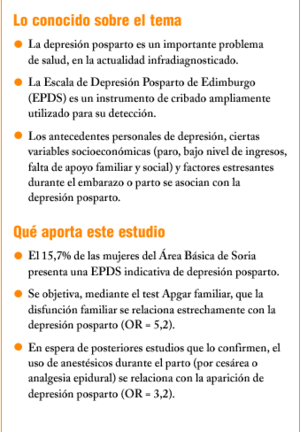What is Edinburgh depression screening? Does the Edinburgh postnatal depression scale measure anxiety? How to identify postpartum depression? Edinburgh Postnatal Depression Scale (EPDS) Postpartum depression is the most common complication of childbearing. The maximum score is 30.

This is not intended to provide a diagnosis – only trained health professionals should do this. Several screening instruments have been validated for use during pregnancy and the postpartum period to assist with systematically identifying patients with perinatal depression (Table 1). Items of the scale correspond to various clinical depression symptoms, such as guilt feeling, sleep disturbance, low energy, anhedonia, and suicidal ideation. A two-year District II initiative was undertaken to pilot routine perinatal depression screening using the Edinburgh Postpartum Depression Scale (EPDS). It has been utilized among numerous populations including U. Please complete all items.
Spanish speaking women in other countries. Although the EPDS is a screening tool for postpartum depression and not necessarily diagnostic for antenatal depression , it is. Typically the EPDS is used at a single time point to identify women with probable depression.
These measures have been used in a considerable number of large- scale surveys (including prospective or panel studies), which mainly focus on general health rather than specifically on mental disorder. Perinatal Mental Health: A Guide to the Edinburgh. If you know someone who might need support, sharing this questionnaire with them is a great first step. However, its potential to detect PCMDs in culturally diverse low- and lower-middle income countries (LALMICs) is unclear. This systematic review aimed to appraise.
It also has adequate sensitivity and specificity to identify depressive symptoms in the antenatal period and is useful in identifying symptoms of anxiety. It starts by discussing the history of research around postnatal depression defining the phenomenon, historically as well as currently with regards to timing of onset and frequently seen symptoms, as well as sociological perspectives into aspects of the phenomenon, in that it. This tool which is for identifying patients at risk for perinatal depression is available in multiple languages. Albuquerque MR, Corrêa H, Couto TC, Santos W, Romano-Silva MA, Santos LM.

Early detection of perinatal depression is an urgent issue. In addition, health care providers need to find workshops at both the introductory and advanced skills levels to better recognize the signs and symptoms of PPD. It can also be used by researchers seeking information on factors that influence the emotional well-being of new mothers and their families. Here is an example, already completed. Untreated depression during pregnancy may have adverse outcomes for the mother and her child.
Screening for depression in the general pregnant population is thus recommended. There is no consensus on which EDS cutoff values to use during pregnancy. There are several different validated depression screening options available to clinicians.
Below, we have compiled a list of the advantages and disadvantages of each type of screening so that you can make an informed decision about which screening tool works best for your purposes. Only qualified Healthy Start workers using EPDS face-to-face with the participant will provide perinatal depression screening. Preventive Services Task Force Final Recommendation Statement on Depression in Adults: Screening. Assessing perinatal depression.
But addressing the problem of maternal mental health should not be difficult: the perinatal period – encompassing. SOR: B, systematic reviews of diagnostic cohort studies and diagnostic.
No comments:
Post a Comment
Note: Only a member of this blog may post a comment.